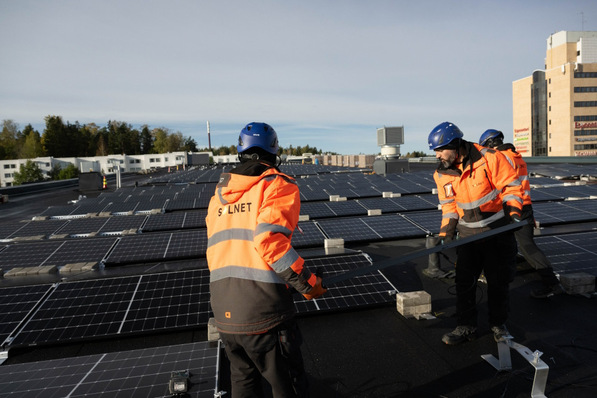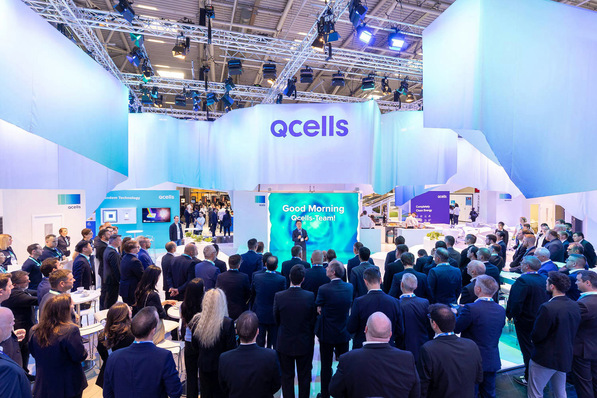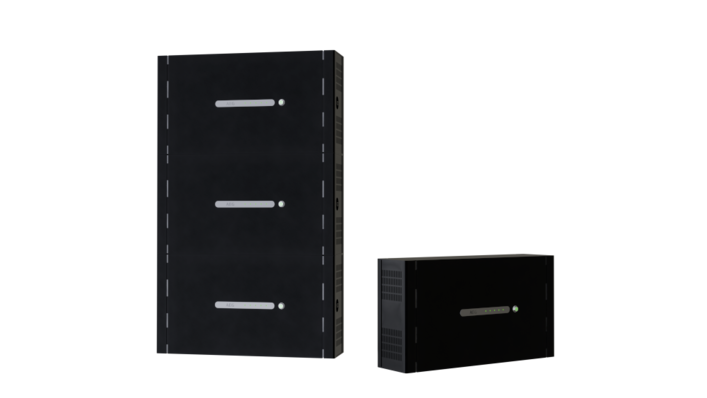Storage units from very large to small are on the shortlist for this year's EES Awards. The coveted prizes will be awarded at the leading trade fair for the European storage industry in June. It is outstanding that so many technical innovations in large storage systems have made it to the final.
Iron-based redox flow storage unit
The Energy Centre from ESS offers a volume of 174 kilowatt hours. The system can supply this energy for a full eight hours. The new battery is a redox flow storage unit. Unlike lithium storage, this is more durable. ESS offers a ten-year warranty, which can be extended to 25 years. However, unlike other redox flow storage units, ESS uses iron rather than expensive and rare vanadium as the electrolyte. This makes the system more cost-effective.
Modular fire protection concept in the large storage system
CATL has stuck with lithium technology. With the Energx, the Chinese supplier has developed a 20-foot storage container that can temporarily store up to 5.64 megawatt hours and make them available again within four hours. This means that it can not only supply electricity over a comparatively long period of time. CATL has also drastically increased the energy density to 385 kilowatt hours per square metre. The system also has a modular fire protection concept with an aerosol extinguishing system. CATL also promises a service life of 25 years, at which point the system will only reach 65 per cent of its original capacity. However, this means that it is designed for the service life of a solar park.
Control battery strings individually
The Powercombo from Cubenergy has a capacity of up to three megawatt hours. It can provide this amount of energy with 1.6 megawatts of power. The battery strings are connected to the AC side and can be controlled individually. This offers a high level of safety and a long service life in the event of a short circuit. After all, Cubenergy promises 10,000 cycles.
Maintaining a constant temperature
With the Elementa two, Trina Storage has also developed a new 20-foot storage container. Thanks to an innovative cooling system and the bionic cooling element design, it is able to limit the temperature difference inside the container to two.5 Kelvin, according to the manufacturer. In this way, the storage system should actually achieve 12,000 cycles, with the capacity not decreasing in the first year of operation. With a system voltage of up to 1,500 volts, it is also suitable for modern solar park designs.
Large-scale storage from Sonnen
With the Pro Flex Stack, Sonnen is also entering the field of larger storage systems. The modular commercial storage system is based on lithium iron phosphate cells with a usable module capacity of between 100 and 450 kilowatt hours. The system can provide this energy with an output of between 92 and 368 kilowatts. The output and storage volume can be varied via the modular units. With a system voltage of 1,024 volts, the storage system is designed for 6,000 cycles and is designed for outdoor use thanks to its IP65 protection class.
Built-in safety and AI
Two sizes smaller, Sigenergy presents the Sigenstor, a storage system with an adjustable capacity of five to 48 kilowatt hours. The output on the AC side varies between three and 30 kilowatts. This makes the storage unit suitable for home applications as well as for small commercial enterprises and apartment blocks. Thanks to numerous safety innovations such as aerogel insulation pads and a modular extinguishing system, the storage unit offers a high level of safety. Among other things, AI-supported energy management ensures a long service life of 10,000 full cycles. AI is also used by the user to control the storage unit. Here, Sigenergy uses GPT-4. The storage system also offers a direct connection for CCS DC charging plugs. This means that electric vehicles can be charged with 400 and 800 volts at up to 25 kilowatts directly from the solar system. The system also supports bidirectional charging at this point.
Storage charging from the electric vehicle
Speaking of charging: With the Edison V2H, a charging system from Hager Energy for electric vehicles has also made it to the finals of the EES Awards. The charging station is an extension for the S10 home storage systems from E3/DC. It enables bidirectional charging of electric vehicles via a CCS socket with eleven kilowatt hours of power. The system is connected directly to the intermediate circuit of the home storage system. As it is designed for electric vehicles with a system voltage of 400 volts, it offers a real solution for the future use of car storage in buildings.
Microinverter in the storage unit for home consumption
The very compact IQ Battery 5P from Enphase Energy is also designed for single-family homes. It offers a storage volume of five kilowatt hours with a continuous output of 3.84 kilowatts. Enphase uses six microinverters in the storage unit. This makes it easier to cover the load ranges of a few hundred watts typical in the household sector on the alternating current side. In this case, only the microinverters that are actually needed for the required power are switched on. Another advantage of the design is that in the event of damage, the battery simply continues to run with the remaining microinverters.
Small storage units for balcony power plants
Jackery Technology is focussing on the very small segment. With the Jackery Navi 2000, the company has developed a small mobile storage system with a capacity of two kilowatt hours. The storage volume can be expanded to up to ten kilowatt hours. The feed-in power is 1.6 kilowatts. With this system, the company is focussing on the application area of balcony solar systems. The advantage: it can be operated both grid-forming, i.e. in a separate circuit such as when camping, and grid-connected. The storage unit can also be charged with dynamic electricity tariffs from the grid, which offers added value in winter when the balcony system supplies little electricity. The aerosol-based fire protection system used also offers unusually high safety precautions for this class of storage system.
Innovative cooling system for storage units
With the VLV 12 compact cooler from Pfannenberg Europa, a storage component has also made it to the final of the EES Award. This is a vibration-resistant cooling unit for stationary battery systems with a cooling capacity of up to 12 kilowatts at ambient temperatures between minus 25 and plus 45 degrees Celsius. The cooler is designed as an air-water system and is supplied with DC voltage directly from the battery system. It also has an in-built heating function that can bring the batteries to their optimum operating temperature at low outside temperatures. In addition, it is possible to integrate the chiller into the overall system via Modbus RTU or Modbus TCP.
The EES Awards will be presented on 18 June 2024 at the International Congress Center of Messe München (ICM). (su/mfo)








